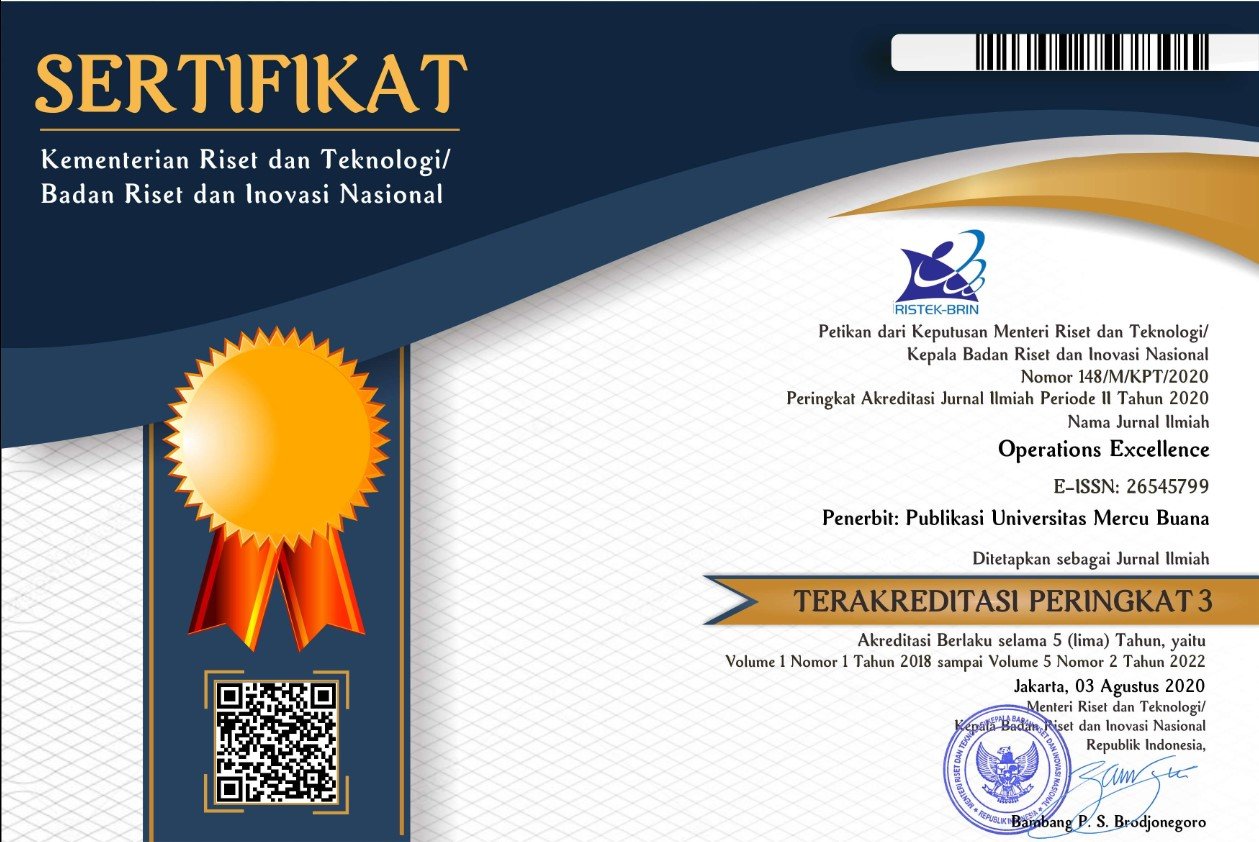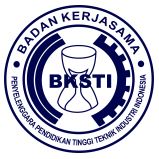Forecasting in humanitarian operations: a method for anticipating fast-moving aid supplies
Abstract
Given Indonesia's vulnerability to a diverse range of natural and man-made catastrophes, it is crucial to have a well-executed disaster management system in place. The National Disaster Management Agency (BNPB), as the agency responsible for disaster relief in Indonesia, emphasizes the importance of this matter. This study examines the enhancement of disaster logistics, specifically focusing on the difficulties related to the fast movement of humanitarian aid supplies. The main challenge in disaster logistics is the uncertainty of demand following the occurrence of the disaster, together with the possibility of supply disruptions caused by insufficient inventory in warehouses. This research places significant emphasis on expedited delivery of humanitarian aid supplies, which are crucial for prompt relief operations, especially in situations with limited preparation time. The main aim of the study is to create a safety stock level policy for BNPB's national warehouse, which will be determined by analyzing forecasts of demand and lead times. The research findings for the year 2022 indicate a low percentage of errors in demand predictions. This result emphasizes the efficacy of the safety stock strategy in actively dealing with sudden increases in demand and reducing uncertainty associated with supply schedules.
Keywords
Full Text:
PDFReferences
Adiguzel, S. (2019). Logistics management in disaster. Pressacademia, 6(4), 212–224. https://doi.org/10.17261/pressacademia.2019.1173
Basu, Souvik & Roy, Siuli & Dasbit, Sipra. (2018). A Post-Disaster Demand Forecasting System Using Principal Component Regression Analysis and Case-Based Reasoning Over Smartphone-Based DTN. IEEE Transactions on Engineering Management. PP. 1-16. 10.1109/TEM.2018.2794146.
Bilalli, B. (2018). Learning the Impact of Data Pre-processing in Data Analysis.
BNPB. (2021). Data Informasi Bencana Indonesia. https://dibi.bnpb.go.id/kwaktu2
Efron, B. & Tibshirani, R.J. (1994). An Introduction to the Bootstrap (1st ed.). Chapman and Hall/CRC.
Chen, Fujiang & Chen, Junying & Liu, Jingang. (2022). Forecast of flood disaster emergency material demand based on IACO-BP algorithm. Neural Computing and Applications. 34. 10.1007/s00521-021-05883-1.
de Smet, H., Schreurs, B., & Leysen, J. (2015). The response phase of the disaster management life cycle revisited within the context of “disasters out of the box.” Journal of Homeland Security and Emergency Management, 12(2), 319–350. https://doi.org/10.1515/jhsem-2015-0005
He, Lu & Kokash, Maan. (2018). Optimization in Pharmaceutical Supply Chain Inventory Management for Disaster Planning.
Makridakis, S., Wheelwright, S. C., & McGree, V. E. (1983). Forecasting: Methods and applications (2nd ed.). Wiley.
Monzón, Julia & Liberatore, Federico & Vitoriano, Begoña. (2020). A Mathematical Pre-Disaster Model with Uncertainty and Multiple Criteria for Facility Location and Network Fortification. Mathematics. 8. 529. 10.3390/math8040529.
Nahleh, Yousef & Hakami, Alhasan & Kumar, Arun & Daver, F.. (2013). Improving Order Quantity Model with Emergency Safety Stock (ESS). World Academy of Science, Engineering and Technology International Journal of Industrial Science and Engineering. 7. 688-693.
Nikbakhsh, E., & Zanjirani, F. R. (2011). Humanitarian Logistics Planning in Disaster Relief Operations. Logistics Operations and Management: Concepts and Models, 291–332. https://doi.org/10.1016/B978-0-12-385202-1.00015-3
Ozbay, K., Professor, A., Erman Ozguven, E., & Research Assistant, G. (2006). A Stochastic Humanitarian Inventory Control Model for Disaster Planning.
Ozguven, Eren & Ozbay, Kaan. (2012). An RFID-based inventory management framework for efficient emergency relief operations. Conference Record - IEEE Conference on Intelligent Transportation Systems. 1274-1279. 10.1109/ITSC.2012.6338812.
Pujawan, I. N., Kurniati, N., & Wessiani, N. A. (2009). Supply chain management for Disaster Relief Operations: principles and case studies. In Int. J. Logistics Systems and Management (Vol. 5, Issue 6).
Şahinler, Suat, & Topuz, Dervis. (2007). Bootstrap and Jackknife Resampling Algorithms for Estimation of Regression Parameters. https://www.researchgate.net/publication/26463248
Siagian, T. H., Purhadi, P., Suhartono, S., & Ritonga, H. (2014). Social vulnerability to natural hazards in Indonesia: Driving factors and policy implications. Natural Hazards, 70(2), 1603–1617. https://doi.org/10.1007/s11069-013-0888-3
Sungkono, Joko. (2013). Resampling Bootstrap pada R. Magistra, 84(XXV), 47–54.
Swartz, C. L. E., Wang, H., & Mastragostino, R. (2015). Operability Analysis of Process Supply Chains-Toward the Development of a Sustainable Bioeconomy. Computer Aided Chemical Engineering, 36, 355–384. https://doi.org/10.1016/B978-0-444-63472-6.00014-8
Thomas, A. (2008). Humanitarian Logistics: Enabling Disaster Response, Fritz Institute.
van Wassenhove, L. N. (2006). Blackett memorial lecture humanitarian aid logistics: Supply chain management in high gear. Journal of the Operational Research Society, 57(5), 475–489. https://doi.org/10.1057/palgrave.jors.2602125
Whybark, D. C. (2007). Issues in managing disaster relief inventories. International Journal of Production Economics, 108(1–2), 228–235. https://doi.org/10.1016/J.IJPE.2006.12.012
DOI: http://dx.doi.org/10.22441/oe.2024.v16.i2.111
Refbacks
- There are currently no refbacks.
Copyright (c) 2024 Operations Excellence: Journal of Applied Industrial Engineering

This work is licensed under a Creative Commons Attribution-ShareAlike 4.0 International License.
Journal ISSN:
| Print ISSN: 2085-4293 | |
| Online ISSN: 2654-5799 |
Tim Editorial Office
Operations Excellence: Journal of Applied Industrial Engineering
Magister Teknik Industri Universitas Mercu Buana
Jl. Raya Meruya Selatan No. 1 Kembangan Jakarta Barat
Email: [[email protected]]
Website: http://publikasi.mercubuana.ac.id/index.php/oe
Journal DOI: 10.22441/oe
The Journal is Indexed and Journal List Title by:

.png)
.png)
.png)


Operations Excellence: Journal of Applied Industrial Engineering is licensed under a Creative Commons Attribution-NonCommercial-ShareAlike 4.0 International License.










